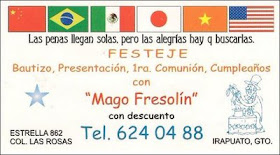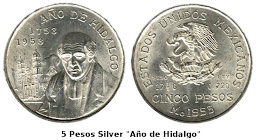Chagas (or Llagas, or Yagas as it is also called) began in some remote valleys of the Andes mountains in South America. It is caused by a parasite called "Trypanosoma cruzi" or "T. cruzi" for short. It first developed in Guinea pigs or "Cavy", as they are sometimes called, which are soft furry creatures that have nothing to do with pigs nor do they come from Guinea. In Spanish they are called "Conejos Indios" (Indian Rabbits) or "Cuy". Their Latin name is "Cavia porcellus". They are the domesticated form of a similar species that grew in the wild. The Guinea pig has played an important role in the folk culture of South American native mountain people, especially as a source of food but also in religious ceremonies. The Guinea pig originated as the "reservoir" for T. cruzi but there are other vertebrates besides Guinea pigs that serve as a reservoir for Chagas disease. These include Tuzos (gophers), ardillas (squirrels), ratones (mice), mapaches (raccoons), and especially tlacuaches (opossums, also called zarigüeyas). The "vector" or transmission device is an insect in the Family "Reduviidae", Sub Family "Triatominae" that is called by various names such as "Conenose Bug, Kissing Bug, Assassin bug, or Triatomine Bug. Most of the 130 or more species of this subfamily feed on the blood of vertebrates, especially mammals. The species that does the most damage to humans is "Triatoma infestans" which in Latin America is known as "Vinchuca" (veen-CHOO-kah). There is evidence exhibited by Incan mummies that this disease existed as early as four thousand years ago. It was contained locally for thousands of years and only began to spread with the advent of modern civilization. The common carrier was the development of the railroads in Latin America at the end of the nineteenth and the beginning of the twentieth centuries. Yes, that's right. T. cruzi came to us by train.
In the past this disease has been prevalent only among the very poor. For those who hold credence in James Lovelock's "Gaia Hypothesis" it would seem to be one of the mechanisms whereby the Earth divests itself of poor people. However, we must not be so heartless and arrogant to think that way because with Globalization this disease is starting to affect everyone, rich and poor alike. Why? Because nowadays T. cruzi is also being passed along by blood transfusions and organ donations. Mothers can also pass T. cruzi on to their children as the parasite travels through the placenta and the birth canal. The normal transmission of T.cruzi to humans is by contamination through the Vinchuca's feces. These bugs get into poorly constructed dwellings and live in the mattresses or bedclothes or even cracks in the bedroom wall or ceiling or floor. At night they come out and feast on the blood of their victims like mosquitoes do. They like to insert their proboscis in the facial area of their victims which is why they are called the "kissing" bug. They do this painlessly but do not insert the T.cruzi parasite while they are actually sucking blood. The parasite is in their feces and is deposited near the tiny wound that their proboscis makes. The anti-coagulant in the mucous of their proboscis makes the wound itch and when the victim involuntarily scratches the itch they automatically rub the feces into the wound and that is how the the victim is infected. The parasite circulates for a short while in the blood before it enters tissue and becomes encysted in a cyst. While it circulates in the blood it sometimes cause swelling in the facial area of the victim, especially at the nearest eye to the bite area. You can see a picture of this swelling below and also a picture of a pre-Columbian Inca figurine with a swollen eye.
What can be done about T.cruzi? Up until now very little has been done other than to try to educate people. The problem is that the very poor are practically defenseless against the Vinchucha and there is really no proven method to rid them of the T. cruzi parasite once they have it. The pharmaceutical companies have not done much to provide an effective treatment for the disease because they are predominantly market oriented and if your market is mainly poor people then it doesn't become a priority. Only when the disease spreads to people who can afford to pay for life saving medicine does the general market take an interest. What can we do personally about this situation? Well, there are several things that we can do. The first and foremost is awareness. We should let our friends and neighbors know about it, which is what I am trying to do here. I also intend to educate myself further on this disease and link up with others who may have a similar interest. There are about sixty workers at the company where I am employed that I intend to make aware of this situation. Beyond that I put the question to you. What do you think can we do to help?
CNN
Vital+Signs
Dr. Sanjay Gupta
"Diseases of Poverty"
http://edition.cnn.com/video/#/video/international/2009/05/28/vital.signs.poverty.bk.c.cnn





 Click on Picture to Enlarge
Click on Picture to Enlarge














































